Assessing the presence and health risks of potentially toxic metals in food: a comprehensive overview
Food products can contain various substances, including essential nutrients, as well as non-nutritive elements and potentially toxic metals. Metal contaminants have the potential to accumulate withi
[...] Read more.
Food products can contain various substances, including essential nutrients, as well as non-nutritive elements and potentially toxic metals. Metal contaminants have the potential to accumulate within the food chain and, when they exceed safe thresholds, can be toxic to humans, leading to health issues. To mitigate health hazards caused by exposure to such harmful substances, accurate monitoring of metal concentrations in various food samples is crucial. Achieving this goal needs understanding the basic principles of various elemental analysis methods. Additionally, selecting the appropriate technique or combination of techniques is critical for obtaining accurate and relevant results. Various advanced analytical techniques, such as atomic absorption spectroscopy, flame emission spectroscopy, inductively coupled plasma-mass spectrometry (ICP-MS), and X-ray fluorescence (XRF) spectrometry, can be used for the quantification of heavy metals and metalloids in food. However, each method has its own limitations, and the accuracy depends on adequate sample preparation. This paper aims to provide a clear overview of commonly used methods and techniques for heavy metal detection in food products, addressing the advantages and limitations of each analytical technique. Additionally, it compares the most important performance parameters of the presented techniques, including the limit of detection (LOD), the limit of quantification (LOQ), recovery, and precision. Moreover, ensuring food safety involves conducting a thorough risk assessment analysis. By integrating risk assessment into the evaluation of heavy metals in food, it becomes possible to determine whether observed concentrations pose significant risks to human health. This step is imperative for establishing regulatory guidelines and implementing control measures to reduce or eliminate potential health risks. Incorporating risk assessment into the broader context of the review enhances its applicability in real-world scenarios, aiding policymakers, regulatory bodies, and researchers in making informed decisions regarding food safety standards and practices.
Gabriel Mustatea, Elena L. Ungureanu
View:788
Download:17
Times Cited: 0
Food products can contain various substances, including essential nutrients, as well as non-nutritive elements and potentially toxic metals. Metal contaminants have the potential to accumulate within the food chain and, when they exceed safe thresholds, can be toxic to humans, leading to health issues. To mitigate health hazards caused by exposure to such harmful substances, accurate monitoring of metal concentrations in various food samples is crucial. Achieving this goal needs understanding the basic principles of various elemental analysis methods. Additionally, selecting the appropriate technique or combination of techniques is critical for obtaining accurate and relevant results. Various advanced analytical techniques, such as atomic absorption spectroscopy, flame emission spectroscopy, inductively coupled plasma-mass spectrometry (ICP-MS), and X-ray fluorescence (XRF) spectrometry, can be used for the quantification of heavy metals and metalloids in food. However, each method has its own limitations, and the accuracy depends on adequate sample preparation. This paper aims to provide a clear overview of commonly used methods and techniques for heavy metal detection in food products, addressing the advantages and limitations of each analytical technique. Additionally, it compares the most important performance parameters of the presented techniques, including the limit of detection (LOD), the limit of quantification (LOQ), recovery, and precision. Moreover, ensuring food safety involves conducting a thorough risk assessment analysis. By integrating risk assessment into the evaluation of heavy metals in food, it becomes possible to determine whether observed concentrations pose significant risks to human health. This step is imperative for establishing regulatory guidelines and implementing control measures to reduce or eliminate potential health risks. Incorporating risk assessment into the broader context of the review enhances its applicability in real-world scenarios, aiding policymakers, regulatory bodies, and researchers in making informed decisions regarding food safety standards and practices.
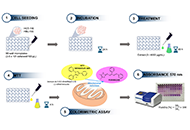 In vitro cytotoxicity assessment of phenolic extracts from grapevine bunch stem and cane by-products for their potential use as phytotherapeutic agentsOpen AccessOriginal ArticleAim: In the present study, bunch stem and cane extracts (Vitis vinifera L. cv. Malbec) rich in phenolic compounds (PCs) like flavonoids, phenolic acids, and stilbenes are studied as potential ant [...] Read more.Susana Ferreyra ... Ariel FontanaPublished: September 02, 2024 Explor Foods Foodomics. 2024;2:525–541
In vitro cytotoxicity assessment of phenolic extracts from grapevine bunch stem and cane by-products for their potential use as phytotherapeutic agentsOpen AccessOriginal ArticleAim: In the present study, bunch stem and cane extracts (Vitis vinifera L. cv. Malbec) rich in phenolic compounds (PCs) like flavonoids, phenolic acids, and stilbenes are studied as potential ant [...] Read more.Susana Ferreyra ... Ariel FontanaPublished: September 02, 2024 Explor Foods Foodomics. 2024;2:525–541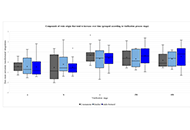 Exploring the effect of Pinus halepensis resin quality on the vinification of Retsina by untargeted profile analysisOpen AccessOriginal ArticleAim: Three factors that affect the chemical composition and perceptible aroma of Retsina—a distinguished Greek wine, crafted by infusing resin harvested from the Aleppo pine (Pinus halepensis M [...] Read more.Alexandros Nakas ... Andreana N. AssimopoulouPublished: August 29, 2024 Explor Foods Foodomics. 2024;2:497–524
Exploring the effect of Pinus halepensis resin quality on the vinification of Retsina by untargeted profile analysisOpen AccessOriginal ArticleAim: Three factors that affect the chemical composition and perceptible aroma of Retsina—a distinguished Greek wine, crafted by infusing resin harvested from the Aleppo pine (Pinus halepensis M [...] Read more.Alexandros Nakas ... Andreana N. AssimopoulouPublished: August 29, 2024 Explor Foods Foodomics. 2024;2:497–524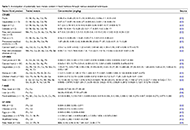 Assessing the presence and health risks of potentially toxic metals in food: a comprehensive overviewOpen AccessReviewFood products can contain various substances, including essential nutrients, as well as non-nutritive elements and potentially toxic metals. Metal contaminants have the potential to accumulate withi [...] Read more.Gabriel Mustatea, Elena L. UngureanuPublished: August 19, 2024 Explor Foods Foodomics. 2024;2:471–496
Assessing the presence and health risks of potentially toxic metals in food: a comprehensive overviewOpen AccessReviewFood products can contain various substances, including essential nutrients, as well as non-nutritive elements and potentially toxic metals. Metal contaminants have the potential to accumulate withi [...] Read more.Gabriel Mustatea, Elena L. UngureanuPublished: August 19, 2024 Explor Foods Foodomics. 2024;2:471–496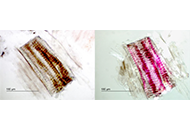 A feasible procedure to detect widespread wrong labeling of Ashwagandha root extracts in dietary supplementsOpen AccessOriginal ArticleAim: Ashwagandha is a widely recognized medicinal plant in Ayurveda, a traditional Indian system of medicine. These extracts, which are concentrated forms of the root, contain specified withanoli [...] Read more.Bernhard Thalhamer ... Wolfgang BuchbergerPublished: August 16, 2024 Explor Foods Foodomics. 2024;2:460–470
A feasible procedure to detect widespread wrong labeling of Ashwagandha root extracts in dietary supplementsOpen AccessOriginal ArticleAim: Ashwagandha is a widely recognized medicinal plant in Ayurveda, a traditional Indian system of medicine. These extracts, which are concentrated forms of the root, contain specified withanoli [...] Read more.Bernhard Thalhamer ... Wolfgang BuchbergerPublished: August 16, 2024 Explor Foods Foodomics. 2024;2:460–470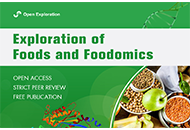 AI-powered revolution in plant sciences: advancements, applications, and challenges for sustainable agriculture and food securityOpen AccessReviewArtificial intelligence (AI) is revolutionizing plant sciences by enabling precise plant species identification, early disease diagnosis, crop yield prediction, and precision agriculture optimizatio [...] Read more.Deependra Kumar Gupta ... Ajay Kumar SinghPublished: August 06, 2024 Explor Foods Foodomics. 2024;2:443–459
AI-powered revolution in plant sciences: advancements, applications, and challenges for sustainable agriculture and food securityOpen AccessReviewArtificial intelligence (AI) is revolutionizing plant sciences by enabling precise plant species identification, early disease diagnosis, crop yield prediction, and precision agriculture optimizatio [...] Read more.Deependra Kumar Gupta ... Ajay Kumar SinghPublished: August 06, 2024 Explor Foods Foodomics. 2024;2:443–459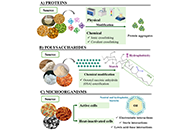 Pickering emulsions in food and nutraceutical technology: from delivering hydrophobic compounds to cutting-edge food applicationsOpen AccessReviewPickering emulsions have emerged as suitable alternatives to healthily and sustainably deliver unstable compounds, addressing the demands of consumers, increasingly concerned about the nutritional v [...] Read more.Lucía Cassani, Andrea Gomez-ZavagliaPublished: July 30, 2024 Explor Foods Foodomics. 2024;2:408–442
Pickering emulsions in food and nutraceutical technology: from delivering hydrophobic compounds to cutting-edge food applicationsOpen AccessReviewPickering emulsions have emerged as suitable alternatives to healthily and sustainably deliver unstable compounds, addressing the demands of consumers, increasingly concerned about the nutritional v [...] Read more.Lucía Cassani, Andrea Gomez-ZavagliaPublished: July 30, 2024 Explor Foods Foodomics. 2024;2:408–442